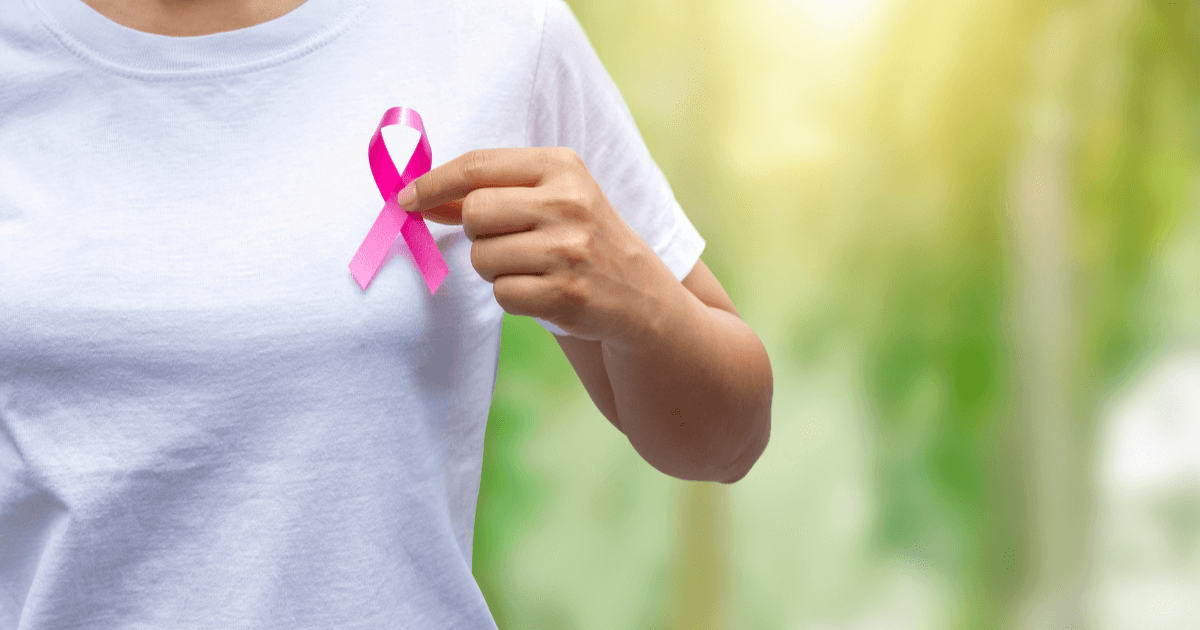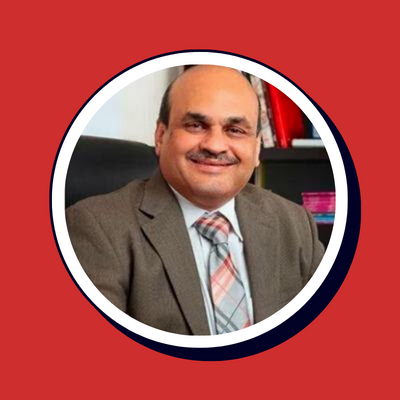
Dr. Chaitanyanand B. Koppiker is India’s one of the leading Breast Cancer, Breast Oncoplastic and Reconstruction Surgeon & the Founder and Managing Trustee of Prashanti Cancer Care Mission, Pune, India.
Dr. Debleena Bhatacharya, Associate Editor,interviews him regarding the Breast cancer management and the research associated for the treatment
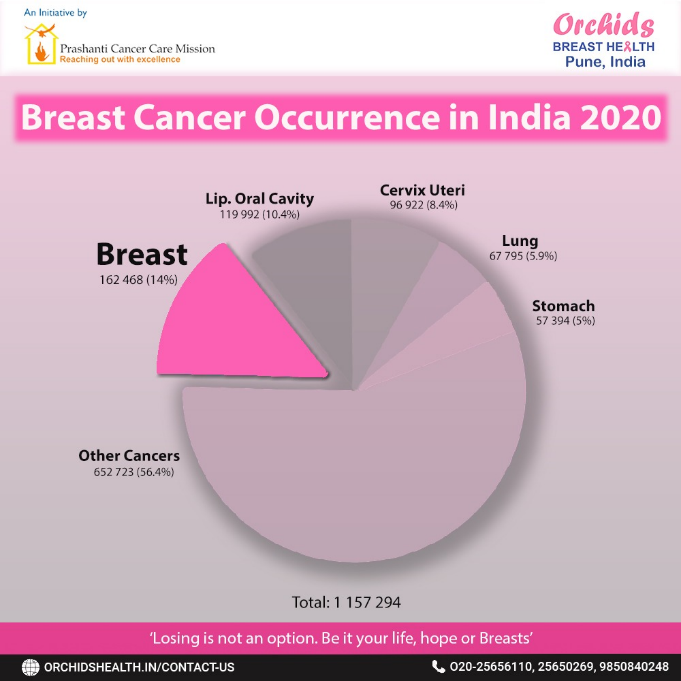
1. In terms of mortality, as per the Globocan data 2020, in India, BC accounted for 13.5% (178361) of all cancer cases and 10.6% (90408) of all deaths . What is the reason behind such high mortality due to breast cancer?.
There are several reasons that can contribute to the high mortality rate due to breast cancer in India. In my experience major reasons for poor survival rate in India when compared to western countries is the late stage of detection. Many patients are unaware of the signs of the disease, and very few perform self-breast examinations or undergo routine checkups. As a result, most patients are diagnosed at a very late stage. Additionally, the stigma of social embarrassment and isolation is a major deterrent in seeking early care for breast cancer. A few more factors such as dense breasts, lack of adequate diagnostic facilities in tier-2 and tier-3 cities and trained professionals, inadequate or fragmented treatment also contribute to late detection and poor survival.
2. How does a woman know that she is having breast cancer? What are the basic diagnoses that one can do at home?.
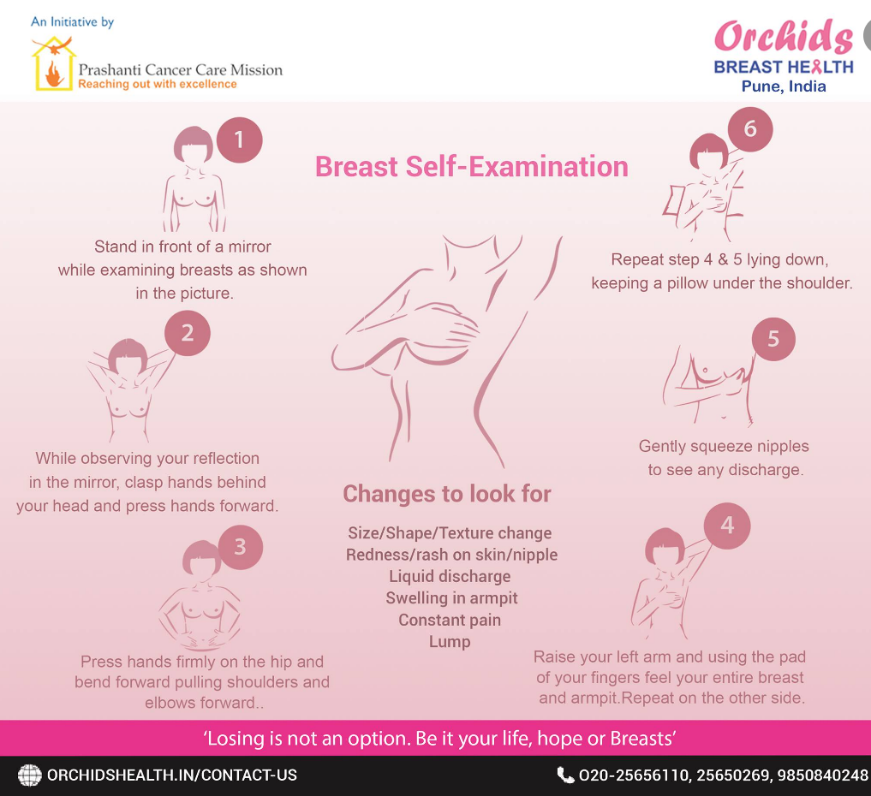
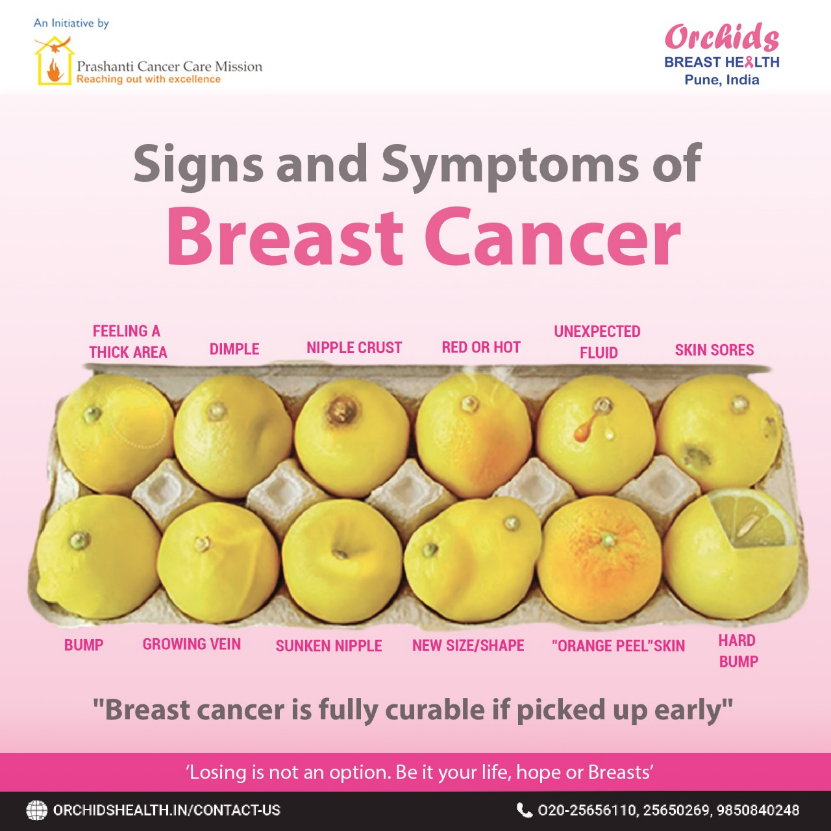
Many women from the community ask me how they will figure out if they have breast cancer. Firstly, remain aware of any hereditary/family history of cancers specifically in immediate family members. Women can take basic steps at home, to help early detection of breast cancer, such as being vigilant about any changes in their breast and doing regular self-breast examination as shown in Figure 1. There are specific signs one can look out for shown in the image Figure 2, such as
- Change in size or shape of breast
- Lump or thickening in breast
- Redness or rash around the nipple
- Discharge from the nipple
- Constant pain in breast or armpit
- Inverted or change in position or shape of nipple
- Change in skin texture
3. What is the role of Mammography and how often should it be done?.
A mammogram is an X-ray picture of the breast that’s commonly used by the physician to detect breast lesions. It is typically painless and can help in detection of abnormal lesions in the breast. According to the American Cancer Society (ACS), women above the age of 40 should have mammography done every year.
4. Does any lifestyle change have an impact on reducing Breast cancer risk?.
Although some risk factors associated with breast cancer are beyond our control, healthy modifications to lifestyle can reduce the risk of breast cancer. Healthy lifestyle behaviours for cancer risk reduction include
- Having a healthy and balanced diet
- Obesity Management
- Active Lifestyle
- Avoid alcohol consumption and smoking
- Young mothers are recommended to breastfeed their infants. As breastfeeding has been shown to have a protective effect towards breast cancer.
5. Does breast cancer have genetic predisposition? Can you please elaborate on this.
About 5-10% of breast cancers are hereditary, that is they result from certain changes in genes that are directly passed on from a parent. The most talked about breast cancer-related genes are the BRCA1 and BRCA2. Although changes or mutations in these genes can increase the risk of breast cancer to about 60% not all individuals with these mutations will develop breast cancer. According to NCCN guidelines, women diagnosed with breast cancer at a young age or having a strong family history such as breast cancer in immediate family members should undergo genetic testing.
6. Can men also have breast cancer? .
Though breast cancer is most commonly thought of as a disease that affects women, breast cancer does occur in men. As discussed in the previous question, genetic predisposition of mutated genes such as BRCA2 can increase the risk of developing breast and prostate cancers in men.
7. Does breast cancer diagnosed in a lactating mother affect the baby’s health?.
There is no direct effect of breast cancer on the baby’s health. The treatment for breast cancer, such as chemotherapy or radiation, may affect breast feeding ability. Breastfeeding during chemotherapy treatment is not permitted. It is dangerous for infants because they interfere with normal, healthy cell division. Women undergoing radiation therapy can nurse the baby. However, radiation may damage the glands or ducts present in and around the breasts, which can limit the milk production in the affected breast. In such a case, you can breastfeed from the other, unaffected breast. It is best to discuss your options with your physician and identify the best course for you and your child.
8. What is the current gold standard treatment for breast cancer.
Breast cancer treatment varies according to type of tumor, stage of cancer and tumour presentation. Surgery remains the main modality for treatment. In some cases, before the surgery neoadjuvant therapy could be given to shrink the tumor bulk. Surgery is usually followed by adjuvant therapy and radiation to ensure full recovery and minimize the risk of metastases.
In India, mastectomy or complete removal of the breast is still the main approach to breast cancer management. However, for most females, the appearance of the breast influences their self-perception and self-image. As a result, mastectomy is often known to result in loss of self-esteem and reduced quality of life (QoL) for the woman. Breast-conserving surgery (BCS) is an oncologically safe approach that also maintains the cosmesis of the breast. BCS has been shown to have better statistically significant outcomes than mastectomy. Patient reported outcomes of BCS show better quality of life, better self-image, and better satisfaction with the surgery compared to mastectomy.
9. You have been involved in many education initiatives around (breast) cancer at National and International level. Could you highlight to us the relevance of these initiatives for the community and what is the gap that you are filling here?.
My practice has always had a multi-pronged approach towards Breast Cancer Management- along with a state of art breast cancer-focused health care unit, we are quite active in capacity building and also run an impactful and exemplary research program. The research program traverses from clinical to molecular to translational research in breast cancer. We also are active in outreach and community awareness through our registered NGO PCCM.
In capacity-building we are at the forefront and run two rich international programs. One is a Masters Program in Oncoplasty in association with University of East Anglia and second is a global educational network for breast cancer physicians and surgeons called BreastGlobal (www.breastglobal.org). Working in resource-constrained settings in an LMIC has mandated the moulding of our approach to breast cancer management specifically for oncoplastic techniques. We have widely published in national and international journals our local surgical adaptations as well as on genetic and molecular aspects of breast cancer in the Indian scenario.
In 2018, my research unit went on to establish the tissue and data biobank to build a retrospective cohort of breast cancer patients that have been diagnosed and treated at my practice. The biobank is set with the vision that tissue repositories with annotated patient data have been proven to be of immense importance to understand cancer profiles and identify targeted and personalized therapies.
Our capacity building and research efforts will prove to be of national importance as I feel that training and education are cornerstones for development of next generation physicians and will directly impact the well-being of the society.

